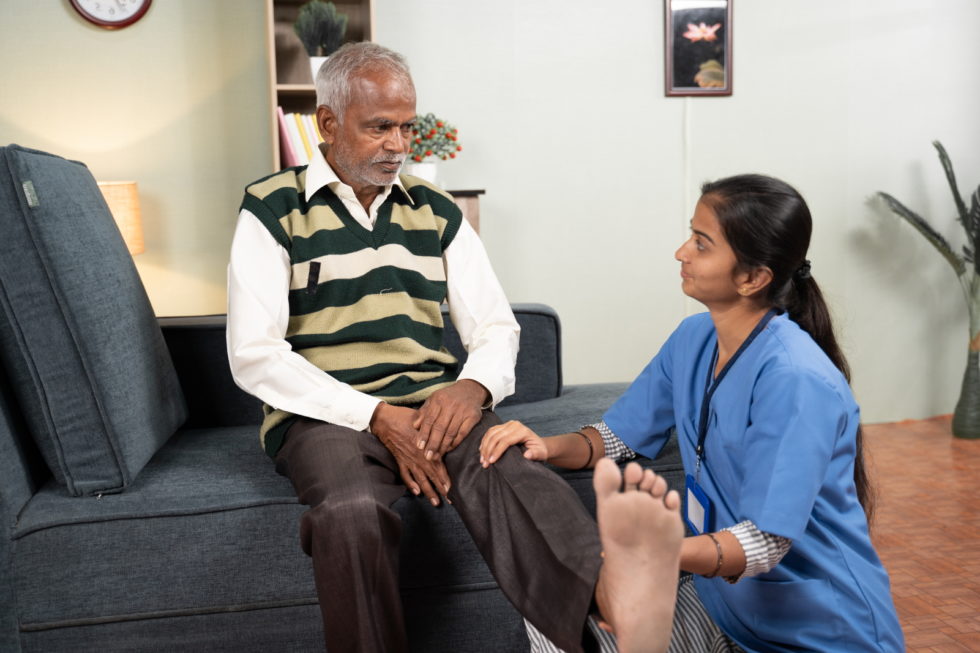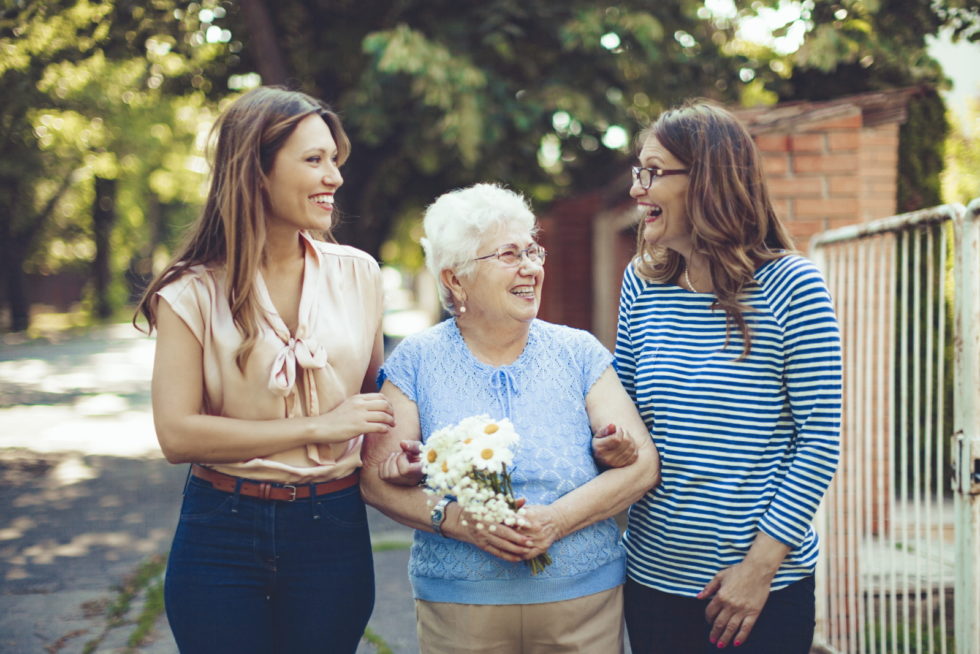Why Do I Have Tired, Chronic Heavy Legs and What Can Help?
Author: StrideCare Internal Team

Janet* used to be the most active person out of all her college friends. If she wasn’t running marathons, she was rock climbing on vacation, hiking on nearby trails, and even riding her bike to work on good weather days. But that was years ago. A few injuries, a new career that requires her to sit a lot, motherhood, and getting older have slowed her down quite a bit. She’d love to recapture her youth, but she doesn’t feel like she can because of what she describes as chronic heavy legs. Her legs constantly feel weighed down, tired, and stiff. It’s almost as if she is walking in quicksand or dragging around cinder blocks.
Janet and anyone else experiencing this phenomenon for seemingly no rhyme or reason need to not assume heavy legs are a temporary issue that goes away on its own. More often than not, it is a sign of poor blood circulation in the legs. And if left unchecked, that weighed-down feeling could be accompanied by other complications.
Are You Experiencing These Symptoms of Heavy Legs?
- Legs that are difficult to lift and move forward
- Stiffness and lack of mobility
- Unpleasant sensation of pain and heaviness
- Swelling
- Painful varicose veins
- Open sores that don’t heal

The Causes of Heavy Legs Could Be Vein Weakness
There are plenty of reasons for heavy legs that have nothing to do with health issues. Perhaps you just wrapped up an intense workout or spent the day walking around the zoo with your kids. You could also be “slowing down” due to advanced age. In any case, that feeling of heaviness is alarming if you’ve never experienced it before. Many describe it as if they have weights strapped around their ankles or that their legs and feet are stuck in slow motion. The good news is that if you can point to a particular activity or event, and there’s no sign of injury, then the odds are that your heavy legs will go away with a little rest.
The problem occurs when you experience heavy legs without exercising or overdoing it with the family. Many times, people with heavy legs say they haven’t used their legs at all. And yet, getting up from the couch to walk into the kitchen feels like they are walking in quicksand. While it’s true that even the healthiest of us suffer from temporarily heavy legs, this condition can signify underlying vein disease and poor blood circulation.
Why Is Poor Blood Circulation a Big Deal?
Any conversation about blood circulation must start with how our veins work. Think of your veins as a network that constantly carries deoxygenated blood back to the heart and supports many systems critical to your cardiovascular health and other functions of blood. As we age, however, those same veins sometimes don’t work quite as well as they used to due to damaged vein valves. As a result, blood begins to flow in the opposite direction and pools in areas it shouldn’t.
These areas are typically in the lower part of your body—especially your legs. As this blood accumulates in your legs, feet, and ankles, you get that heavy leg feeling that won’t go away. Your once-healthy veins are impacted by a variety of factors, including:
- Age — Vein disease is more common in women and older adults between 40 and 80.
- Diet — Poor lifestyle choices include diets high in salt, processed meat, etc.
- Excess weight — Obesity increases pressure on your veins and can also hinder blood circulation.
- Smoking — Up to 80% of patients with Peripheral Arterial Disease are current or former smokers.
- Excessive standing — If you have a job that requires you to spend most of your time standing, gravity sets in and increases the odds that blood won’t circulate as it should.
- Pregnancy — Multiple pregnancies and hormonal changes increase blood volume and stress on veins.
- Sedentary lifestyles — Inactivity inhibits proper blood flow throughout the body.
- Heredity — If your mother or grandmother had vein disease, you are more likely to follow in their footsteps.

How to Relieve Heavy Legs
The good news is that even if the reason for your heavy legs is related to poor blood circulation, you can alleviate the symptoms through early diagnosis and a few lifestyle changes.
Here are 5 helpful tips to relieve your heavy legs.
- Elevate your legs — Elevating your legs for 30 minutes at least four times a day uses gravity to your advantage by allowing blood pooling in your legs and feet to drain away.
- Eat better — Your diet helps maintain blood circulation, cardiovascular health, and the ability to lose weight. Options include vegetables, fruits, and fiber-rich foods.
- Quit smoking — Smoking is the leading cause of preventable disease and death in the United States, including its direct impact on the formation of varicose veins and other venous diseases and complications.
- Get more exercise — The American Heart Association recommends at least 150 minutes per week of moderate-intensity aerobic activity to improve blood flow throughout the body.
- Wear compression socks — Compression socks promote blood circulation and reduce symptoms such as swelling and pain, especially during long work shifts, plane flights, and standing on your feet for a long time.

Visiting a vascular specialist might be your best action if the above remedies don’t work. Vascular specialists can suggest minimally invasive treatment options such as radiofrequency ablation, microfoam ablation, or sclerotherapy. Technology has advanced considerably to the point where reoccurrence rates are incredibly low.
StrideCare Can Help with Heavy Legs
While heavy legs are a common condition and might not always require medical intervention, it is not that way 100% of the time. Sometimes heavy legs are a result of poor blood circulation. The key to any pain or discomfort in life, whether mild or severe, is to not delay seeking medical help. Even if a trip to the doctor results in you being told that nothing is wrong, at least you can move forward with peace of mind. This is especially true if there is a possibility that you have vein disease. If left untreated, vein disease can cause severe and life-altering complications.
Our expert doctors and caring staff at StrideCare utilize the latest technologies and minimally invasive procedures to help our patients with a variety of blood circulation issues due to vein and artery diseases. The vascular physicians at StrideCare are board-certified diagnostic radiologists with additional fellowship training in vascular and interventional radiology.
Prior to starting any new treatment or questions regarding a medical condition, always seek the advice of your doctor or other qualified health provider. This information is not a substitute for professional medical advice.
StrideCare serves the South Texas area including Houston, San Antonio, Austin, Round Rock, Bastrop, Brushy Creek, Cedar Park, Converse, Georgetown, Hutto, Kyle, Leander, Marble Falls, New Braunfels, Pasadena, Pearland, Pflugerville, San Marcos, Schertz, Houston, Sugar Land, Katy, Webster, Bay City, Clear Lake, Lake Jackson, The Woodlands, Universal City, Spring, Kingwood, Stafford, Conroe, Texas City, Cypress, League City, Bellaire, and more.
*Patient stories are true. Names and/or photos may be changed to protect patient confidentiality.


